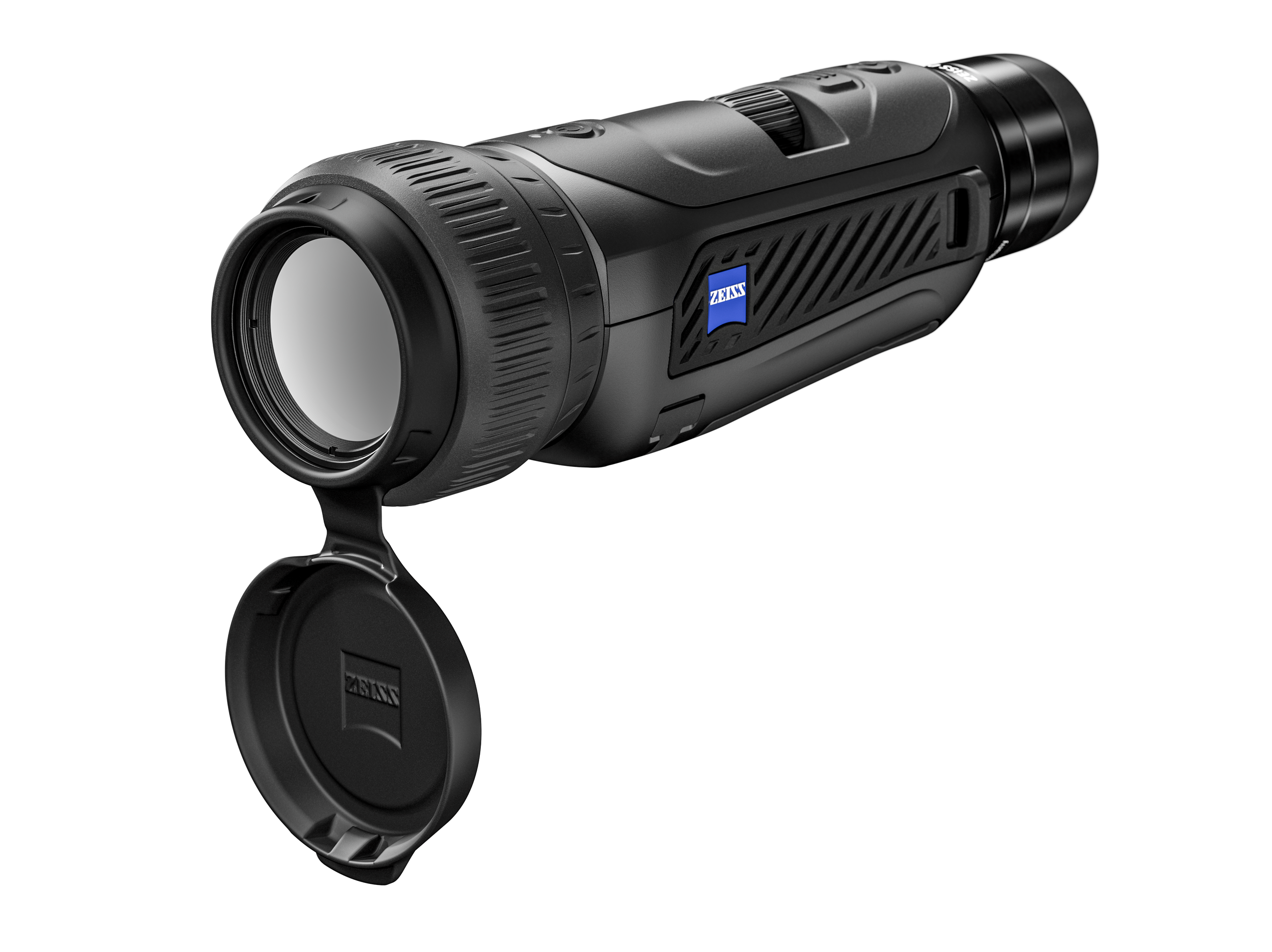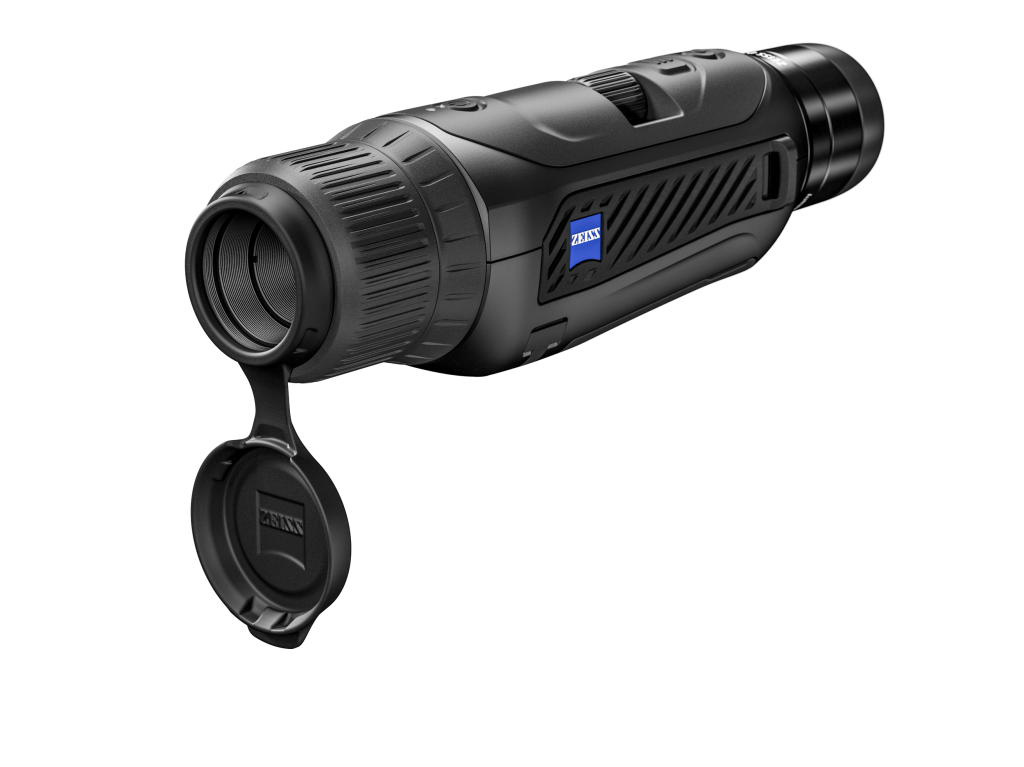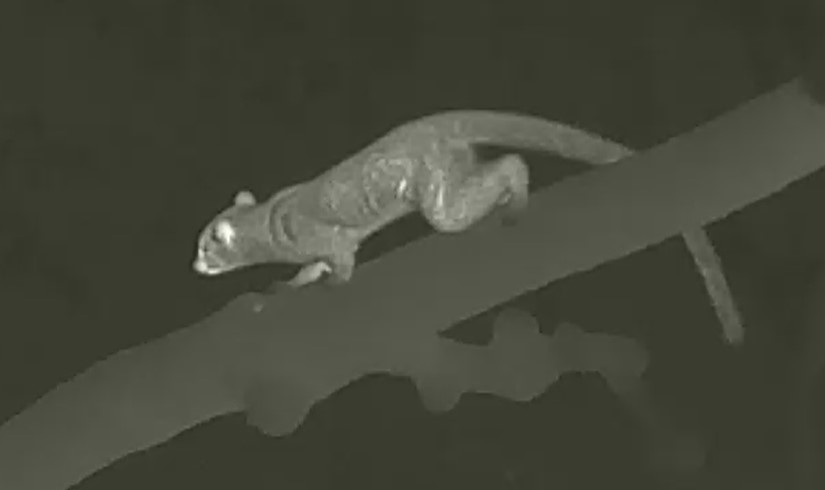
Thermal Scope Review: First Impressions of the Zeiss DTI6/40
I met up with the Zeiss team at the British Bird Fair this summer and they offered to loan me one of their latest thermal scopes – the DTI6 – to test out, which I did in the northwest of the USA this August.
I have been trying it out in Bolivia again this past two weeks and will report back in a month or two on how it performed in the rainforest (in short it did brilliantly) but I wanted to share my first impressions now which I had started writing before I left for Bolivia.
I started using a thermal scope back in 2017 and a few days later it found me a Pygmy Hippo. I was fully converted! My review of that first scope experience has been read 24,000 times in the past 20 months alone. Crazy.
Thermal scopes are – as just about everyone who has used them will agree – a mammalwatching game changer. Mammalwatchers were quick to adopt this new technology and birders are increasingly following suit.

Seven and a half years of technological progress later it probably isn’t surprising that the Zeiss DTI6 is a huge improvement over my old Pulsar scope, which to be honest I am amazed still works given how many times it has been dropped, bashed and been rained heavily on.
Beyond the Zeiss’s ability to take pictures and video, the most immediately obvious difference is the quality of the image when you look through the Zeiss which is crystal clear. Now I seldom use my thermal scope to observe animals. I prefer to find them with the thermal at which point I switch to a flashlight to get a ‘proper’ look. So in that sense I didn’t think the quality of the image was all that important to me so long as I could find the animal. But what I hadn’t anticipated was that animals seem much easier to locate in the flesh using the Zeiss. Perhaps because the image quality is so much better.
There is a learning curve with thermal scopes. But by far the most difficult thing (for me at least) is mapping the image I see on the screen into reality. The poorly defined image, coupled with the lack of perspective and depth of field through my old scope, meant it was often difficult to know if that heat blob was a mouse 4 metres away or a monkey 40 metres further on. Finding a hot spot in my thermal scope there would provoke a lot of muttering, swearing and head wiggling as I try to extract clues from the patterns of tree branches that would lead my flashlight beam to the heat. Which far too often is a sleeping bird.
I found this even more confusing when I used the Xinfrared T2 phone camera. The image quality was excellent but something about looking at the phone screen at arms length made the navigation even more difficult .. at least for me.
In August I discovered that the mammalian treasure hunt is much easier with the Zeiss scope. I got a better sense of depth plus a much crisper image, and so was generally able to find the animal with a flashlight in half the time it would have taken with the other scopes I have used. This is actually a huge deal for me and my blood pressure.
The battery life on the Zeiss is much better than the Pulsar. The Zeiss comes with a rechargeable battery pack that lasts an impressive 6.5 hours. And it is very quick to charge (at least once I started using the USB C cable they supplied). It focusses in much closer too than my Pulsar XQ50.
It is difficult to compare the efficiency of the DTI6 in registering heat compared to other scopes as I was on my own. But after finding a tiny myotis bat perched high on a tree 100 away I suspect the Zeiss has a better detection range. I plan to run some side-by-side comparisons in Bolivia where we will be armed to the teeth with thermal scopes.
Here are the technical details from the Zeiss website.
“ZEISS’ innovative ZEISS Smart Image Processing (ZSIP Pro) algorithm delivers a sharp, high-contrast thermal image via the 640 × 480 sensor with 12 micron pixel pitch and the 1024 × 768 HD AMOLED display. ZSIP ensures that you can perfectly identify key details under difficult conditions and with low thermal contrast.
The ZEISS DTI 6/40 was specially developed for observations from a great distance. With a range of up to 2 km and 3x optical magnification, the thermal imaging camera keeps details visible with ease.”
The DTI 6/40 has a field of view of 19m/100m and a range of 2000m! They also offer a DTI6/20 which has a field of view of 38 m/100 m and a range of 1000m. So twice the field of view and half the range.
The DTI6 is the largest of the Zeiss thermal scopes Zeiss and it’s a bit heavier than I would like: 755 grams. Not an immense load to carry and perfectly comfortable hanging around my neck. But if, like me, you like to hold the scope continuously and look through it every few seconds then your fingers might start to ache after a couple of hours. By comparison the DTI6/20 is 690g.
Some of the other scopes previously offered by Zeiss – the DTI 3 and 4 ranges – have recently been discontinued but their compact DTI1 scopes are still available.
Zeiss has a reputation for high quality and quite expensive optics but their thermal scopes are less expensive than I had realised.
In short I love it and have been even more impressed by its strong performance these past days in the Bolivian jungle. I will report again on this trip with details of how it performed alongside several Pulsar scopes. But in the meantime here is a screengrab from a video that Zeiss Ambassador Stephen Menzie took of an Olingo in Panama with a Zeiss DTI.

Post author
13 Comments
-
-
-
JanEbr
7 years ago Zeiss would have made a bang with this. Now? Selling a thermal for this amount of money, considering the cheap competition? The market is gonna be tiny. It’s basically on brand for these “high-end optics” companies like Zeiss, Leica, Swarowski … who sell optics with completely marginal benefits for an order of magnitude higher prices – but birding is so huge, that even if the fraction of people willing to put that much money is small, the absolute number is still big. But thermals … I dunno, I consider my Pulsar, which 4 years ago went for half of this, to be vastly overpriced by today’s standard.
-
Vladimir Dinets
Birders increasingly use them, but probably still a tiny market compared to hunters (which explains gradually increasing range rather than view field). Currently the most important buyers (as far as I know) are Russian agents who buy them under mass-produced fake identities to import to Russia via Kyrgyzstan and convert into rifle sights (which explains the scopes becoming more and more tubular in shape).
Personally, I would stay away from new models until it becomes clear how durable they are. Jon mentioned the extreme durability of Pulsars – I have a similar experience. If money wasn’t an issue, I would probably try to get two scopes, one with wide angle for use in forests and from car, and one with long range for open landscapes.
-
Jonatan den Haan
I recently compared the Zeiss scopes to my Pulsar Telos XP50 and found the detection range of the Zeis rather lacking. In some fields a clear bright spot lit up in my Pulsar, while the field seemed completely empty in the Zeiss. What i also noticed is that the refresh rate of the Zeiss was significantly lower than the Pulsar, making me a bit nauseous when scoping from a moving car. Especially for the price, I think you can do way better with other brands. Taking every aspect into consideration, I think the only real competitor is Pulsar, as the build quality of the Zeiss is very sturdy with lots of metal, something that for example Hikmicro lacks in my opinion. I did like the interface of the Zeiss a lot, but I did notice I accidentally moved the scroll wheel quite a few times.
-
jurenoult
Did soemone tried HIKMICRO FALCON FQ35 or FQ50 ? From the specification, they look slightly better than the Zeiss. But more importantly for me, they are way lighter (but still with a metal – Magnesium – case, and from hunting blogs these monocular are still sturdy). Of course Zeiss is a premium brand in optics but I guess that a thermal cam if 95% electronics. At first sight I did not feel inspired with the name “HIKMICRO”, but the firm has something like 40 000 employees, half of them are engineers, and seems tobe a leader in thermal camera.
-
Lennartv
It’s important to realize that many brands that offer thermal imagers don’t in fact manufacture them. Often the ‘basis’ is developed by another manufacturer and they modify it to suit their own purposes. This means they don’t actually have that much influence on performance, but more on looks and software. It’s a bit difficult to find out how this process exactly works with different brands, but as far as I know at least Pulsar and Hikmicro have the production process completely in their own hands. I think at least Leica and Zeiss are among the brands that don’t make their own thermals, but correct me if I’m wrong.
Leave a Reply
You must be logged in to post a comment.


Lars Michael Nielsen
Thnx for the review. What is the price and how is it compared to the newer Pulsar models?